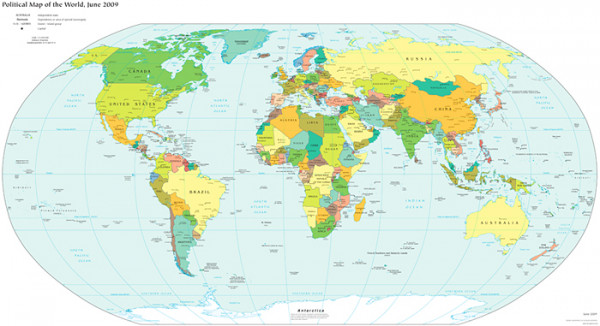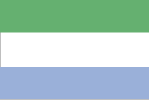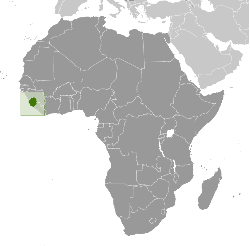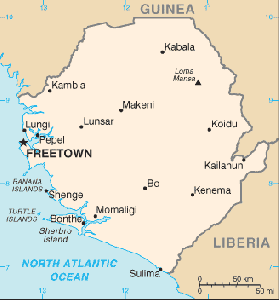Sierra Leone
Overview
| Flag |
|
| Anthem |
High We Exalt Thee, Realm of the Free |
| Capital |
Freetown |
| Largest city |
Freetown |
| Official language(s) |
English |
Demonyma name for a resident of a locality, often the same as the name of the people's native language
|
Sierra Leonean |
| Government |
Constitutional republic |
| Area |
71,740 km2, 27,699 sq mi |
| Population |
~ 7 million |
| Currency |
Leone (SLL) |
| Internet TLD |
.sl |
Geography
Sierra Leone is a country in West Africa. It is bordered by Guinea to the north and east, Liberia to the southeast, and the Atlantic Ocean to the west and southwest. The country has a tropical climate. The
diverseconsisting of many different elements environment ranges from
savannaha tropical grassland with randomly distributed trees to rainforests.
The capital of the country is Freetown. With a population of just over 1 million, it is at the same time the largest city. Freetown is the economic, financial, and cultural centre of Sierra Leone. Other major cities are Bo, Kenema, Koidu Town and Makeni.
Society and culture
Population
The 2009 estimate of Sierra Leone's population is 6.4 million. At the end of 2007, Sierra Leone had a population of 8,700
refugeesa person seeking a state of safety, protection or shelter in another country. Nearly all of the refugees were Liberian. There are officially fourteen ethnic groups in the country. The two largest and most dominant groups are the Mende and Temne. Each group comprises 30% of the population. The
life expectancythe chances of survival according to statistical tables of Sierra Leoneans is 41 years.
Languages
English is the official language. It is spoken in schools, government administration, and is used by the media. Three other languages are present: Mende, Temne and Krio. Mende is mostly spoken in the south, Temne in the north. Krio is the principal spoken language of about 10% of the population but is understood by 95%.
Religion
The religious diversity of Sierra Leone has
seldomnot often led to conflict. Followers of Islam are estimated to make up 60% of the population. About 30% of the population are Christians. About 10% follow only African
indigenousnative to a region religion. Only small numbers of people have other faiths like Bahāʾī, Hinduism, and Judaism.
Government and politics
Sierra Leone is a constitutional republic. It has a directly elected president and a
unicameralof a government having only one chamber legislature. The government comprises the
Legislaturegovernmental body with the power to make, amend and repeal laws (the Parliament), the
Executivethat branch of government which is responsible for enforcing laws and judicial decisions, and for the day-to-day running of the state (the President and members of his cabinet) and the
Judiciarythe court system and judges considered collectively. The president is the head of state and the head of government. He is also the commander-in-chief of the
Armed Forcesthe military forces of a nation, such as the army, navy, air force and marines and the Police. The current president of Sierra Leone is Ernest Bai Koroma.
Economy
Rich in minerals, Sierra Leone
relies onto be dependent on mining, especially diamonds, for its economic base. The country is among the top 10 diamond producing nations in the world. Still, it has historically
struggledto have difficulties to manage their export. About two-thirds of the population engages in agriculture. There is high unemployment, especially among the youth. By the 1990s economic activity was
decliningto become weaker, to fall down. Over the next
decadea period of 10 years much of the economy was destroyed in the country’s civil war. Since 2002, the economy of Sierra Leone has been
recoveringto get better.






